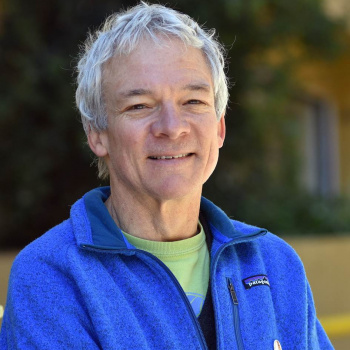Full Professor, Centro Interdisciplinario de Neurociencia de Valparaíso, Facultad de Ciencias, Universidad de Valparaíso (2006-present).
Centro Milenio Genómica de la Célula (CGC)(2007).
Ph.D. Brandeis University (1991) Associate Professor, Cornell University (2004).
Personal website : ewerlab.org
Contact information:
E-mail: john.ewer@uv.cl
Pasaje Harrington 287, Playa Ancha. Valparaíso
Phone: (56)-(32)-2508040
I am interested in the control of behavior by neuropeptides and the circadian (biological) clock.
For several years my lab has investigated the neuroendocrine control of ecdysis, a stereotyped behavior used by insects to shed their old exoskeleton at the end of each molt, and which serves as an excellent model for understanding how neuropeptides trigger complex behavioral routines. We have taken advantage of the powerful genetic and molecular tools available in Drosophila to understand the role of each neuropeptide, and how they act in concert to cause the expression the ecdysial sequence.
We also investigate the mechanism by which the circadian clock controls the time of adult ecdysis. For most stages, ecdysis is turned on when the molt is completed. By contrast, ecdysis to the adult (also known as eclosion) is also controlled by the circadian clock, which restricts (“gates”) eclosion to the morning or evening periods, depending on the insect species. Since we know a lot about how the fly’s clock runs and how eclosion behavior (the clock’s output) is regulated, the gating of eclosion by the circadian clock is an excellent system for investigating how this clock imposes a daily rhythmicity to behavioral and physiological outputs.
- Cavieres-Lepe J, Amini E, Zabel M, Nässel DR, Stanewsky R, Wegener C, J. Ewer. (2024) Timed receptor tyrosine kinase signaling couples the central and a peripheral circadian clock in Drosophila. Proc Natl Acad Sci U S A. 121(11):e2308067121. doi: 10.1073/pnas.2308067121
- Palacios-Muñoz A, de Paula Moreira D, Silva V, García IE, Aboitiz F, Zarrei M, Campos G, Rennie O, Howe JL, Anagnostou E, Ambrozewic P, Scherer SW, Passos-Bueno MR, J. Ewer. (2022) Mutations in trpγ, the homologue of TRPC6 autism candidate gene, causes autism-like behavioral deficits in Drosophila. Mol Psychiatry. 27(8):3328-3342. doi: 10.1038/s41380-022-01555-1
- Mark B, Bustos-González L, Cascallares G, Conejera F, J. Ewer. (2021) The circadian clock gates Drosophila adult emergence by controlling the timecourse of metamorphosis. Proc Natl Acad Sci U S A. 118(27):e2023249118. doi: 10.1073/pnas.2023249118.
- Flaven-Pouchon, J., J. V. Alvarez, C. Rojas and J. Ewer (2020). The tanning hormone, bursicon, does not act directly on the epidermis to tan the Drosophila exoskeleton. BMC Biol 18(1): 17. doi: 10.1186/s12915-020-0742-5.
- Whitlock, K. E., J. Postlethwait and J. Ewer (2019). Neuroendocrinology of reproduction: Is gonadotropin-releasing hormone (GnRH) dispensable? Front Neuroendocrinol. doi: 10.1016/j.yfrne.2019.02.002.
- Palacios-Munoz, A. and J. Ewer (2018). Calcium and cAMP directly modulate the speed of the Drosophila circadian clock. PLoS Genet 14(6): e1007433. doi: 10.1371/journal.pgen.1007433.
- Selcho†, M., Millán†, C., Palacios-Muñoz†, A., Ruf, F., Ubillo, L., Chen, J., Bergmann, G., Ito, C., Silva, V., Wegener*, C., and Ewer*, J. (2017). Central and peripheral clocks are coupled by a neuropeptide pathway in Drosophila. Nature Comm 8:15563; doi: 10.1038/ncomms15563.
† Equal contribution; * co-corresponding authors - Mena, W., S. Diegelmann, C. Wegener and J. Ewer (2016). Stereotyped responses of Drosophila peptidergic neuronal ensemble depend on downstream neuromodulators. eLife 5:e19686 doi: 10.7554/eLife.19686



